It is interesting to know that just like humans, dogs also have distinct looks, temperaments, and personalities, which is why we adore them.
You probably know that dogs have different colors, markings, and patterns if you are a dog lover. Some coat colors, patterns, or markings are common, while others are confusing or unusual.
Color combinations, markings, and patterns found on dogs are endless. However, here are the 16 most popular:
Solid Dog Colors
First, let’s discuss the solid colors found on canines. If you have solid-colored dogs, it means that they have a single color throughout their bodies. You will not find any color variations, spots, specks, or stripes.
1. Black
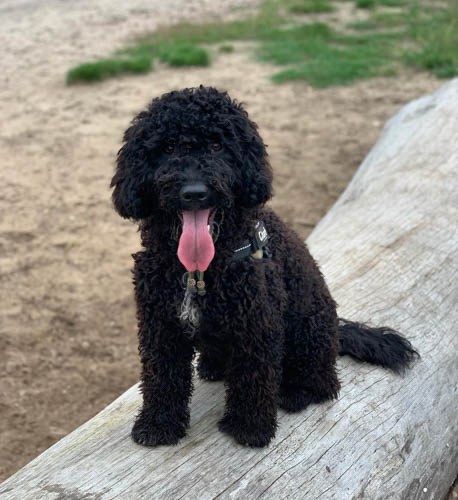
Black is one of the most common and popular colors for canines. Black-colored dogs may have a complementary color or marking, but black remains the base color. White and tan markings are some of the popular markings with a solid black base. On the other hand, you can find plenty of dogs with solid black color.
Read More: Black German Shepherd Dogs
For example, Beaucerons, Doberman Pinschers, Hovawarts, Black and Tan Coonhounds, Rottweilers come with a solid black coat but tan markings. These dogs are popular among dog lovers and breeders due to their attractive color combinations.
Interesting Facts: Black and White Dog Breeds
Meanwhile, you can also encounter dog breeds with a solid black coat combined with white and tan markings. While they are often categorized as tri-colored dogs, the base and majority of the coat color is solid black. To make it simple, they are called black dog breeds. Beagle, Australian Shepherd, and Bernese are some excellent examples.
Finally, some dogs have a black coat with monochromatic markings like white. These dogs include Dalmatian, Boston Terrier, and Border Collie.
2. White
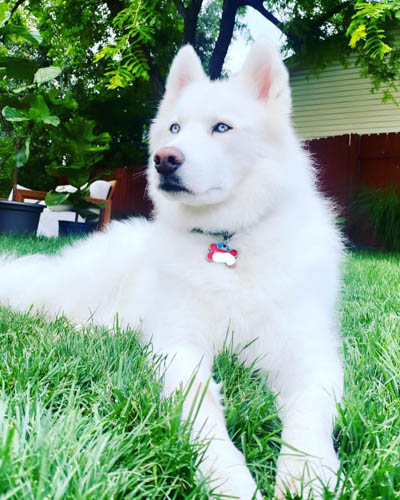
If you encounter dogs with completely white color from head to tail, they are considered solid-white dog breeds. Unlike black-colored dogs, white-colored dogs come with less common markings. This classic color represents goodness, innocence, and purity.
White dogs offer a majestic aura, and many people find them gorgeous. When you imagine white dog breeds, you may end up with Dogo Argentino, Japanese Spitz, White Shepherd, West Highland White Terrier, Great Pyrenees.
Meanwhile, as mentioned above, there are several white dogs with markings. Good examples are French Bulldog, Lhasa Apso, Borzoi, Pomeranian, Siberian Husky, and Dalmatian.
3. Brown
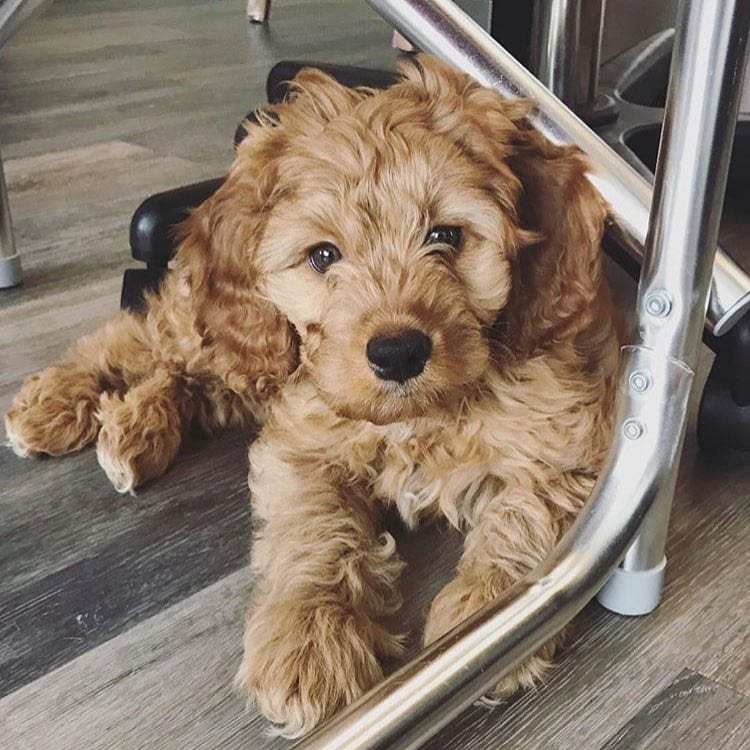
If you see brown-colored dogs, you might get confused since there are plenty of browns in the family. Liver, tan, fawn, chocolate, etc., can be classified as brown dog breeds. In other words, there are so many breeds that fall into this color category.
The iconic Chesapeake Bay Retriever is only the most talented and skilled water retriever in the world but also an excellent example of brown dogs. Other popular brown dog breeds include Boxer, Staffordshire Terrier, Chow Chow, Airedale, and Bloodhound.
Additionally, a few terrier and spaniel breeds fall into this solid brown dog category. The majority of the lesser-known dogs include Border Terrier and Field Spaniel. As you take a closer look into these dog breeds, you can get a broad spectrum of brown.
4. Red
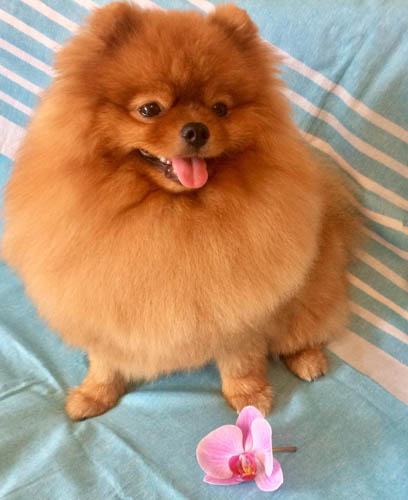
In most cases, many people get confused between brown and red dogs. Red-colored dogs are not actually red; instead, they are more of orange-brown dogs, bright brown, or tan with a bit of red.
Interesting: Red Coated Dog Breeds: 18 Pups With Beautiful Red Coats
If you see a red dog in person, you will realize that the color category is not as complicated as it sounds. On the other hand, it is still understandable to mistake red dogs for brown dogs and vice versa due to their similarity in colors.
Red dogs can also refer to the liver, chocolate, or straight-up brown dogs in other breeds. The most popular all-red terrier is the Irish Terrier. Other red-colored dogs include Cavalier King Charles Spaniel, Vizsla, Shiba Inu, Irish Setter, Beagle, etc.
5. Gold
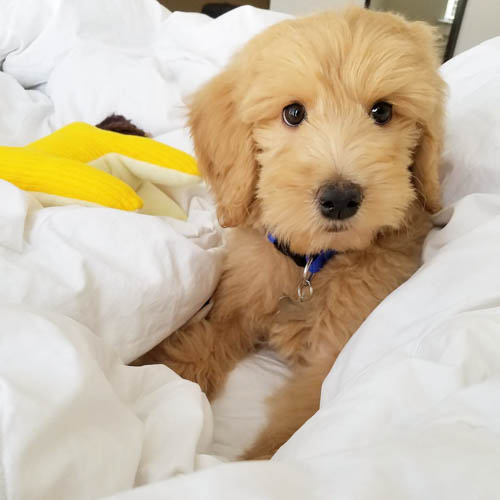
If gold-colored dogs come to your mind, you may immediately think of Golden Retriever. However, the same thing with brown-colored dogs, gold is a little overarching color encompassing other shades like mustard, honey, fawn, and wheat.
Aside from Golden Retriever, there are other gold dogs, such as Basset Fauve de Bretagne, Pharaoh Hound, Wirehaired Vizsla, Finnish Spitz, American and English Cocker Spaniel, and more. The majority of Golden Retrievers mixes come with the dominant gold color. As a result, you will find Golden Shepherds, Goldendoodles, and more with stunning golden colors.
6. Blue

If you want to see dogs with a very exotic and unique look, you cannot go wrong with blue-colored dogs. Since only a few dog breeds have a blue coat, they are considered a very rare color category but remain popular.
Blue dogs do not have blue coats. Instead, blue refers to slate, silver, or gray color with a hue of blue. The most common blue-colored dogs are Great Danes, Weimaraner, Thai Ridgeback, Kerry Blue Terrier, and Blue Lacy.
7. Gray
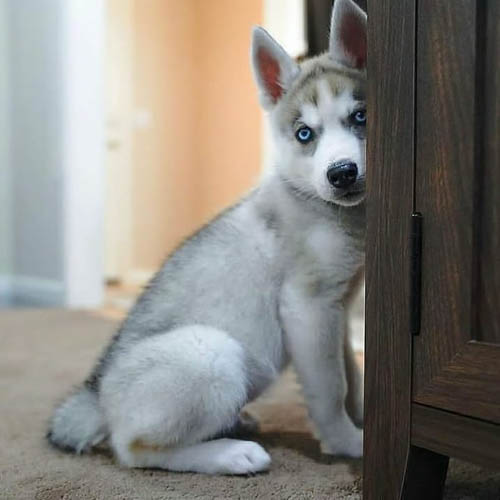
Gray and blue dogs are very similar. The most popular gray-colored dog breed is the Siberian Husky. In most cases, Siberian Husky’s and other gray dogs’ coat is combined with white or black in rough patches.
Weimaraner is considered the only purebred solid gray-colored dog for such a thing. This dog breed comes with a few color variations, including silver, blue-gray, mouse-gray, and silver-gray. All of them come with an underlying gray tone.
Most gray-colored dogs have color markings, such as brown, tan, white, and black. Keeshond, Norwegian Elkhound, Irish Wolfhound, and Alaskan Malamute are common examples.
Dog Coat Color Patterns
You will find many dogs that are not a single solid color. Their coat may contain two or more colors. This color category is called patterns, and here are some of the most popular patterns:
8. Bicolor
If your dogs have two distinct colors, they are called bicolored dogs. Black and brown, black and white, and black and tan are the most common bicolor variations.
For example, you can think of Rottweiler with black bodies and brown or tan markings. You can also imagine Border Collie with black bodies and white faces, necks, and feet.
9. Tricolor
As the name implies, these dogs have coat patterns made of three distinct colors. The three colors are often comprised of black, white, and tan. Generally, they are tan and black dogs with white markings.
On the other hand, there are also tricolored dogs with Isabella, blue, and liver coats. Popular dog breeds with tri-colored coats include Basenji, Papillon, Rat Terrier, Beagle, Entlebucher Mountain Dog, and Bernese Mountain Dog.
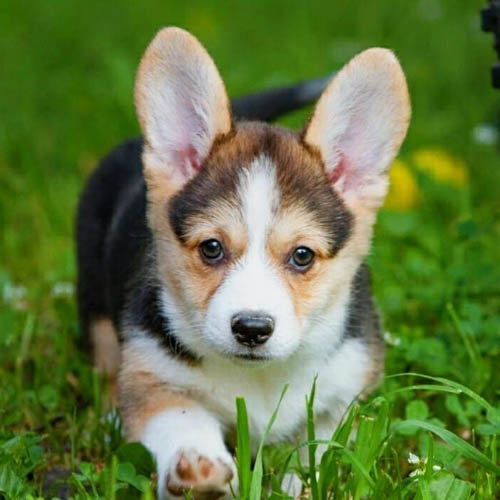
10. Merle
The merle coat is characterized by a dark patches’ marbling effect against the same or lighter color. You will find a variation of merle, such as red merle with reddish patches and blue merle with mottled black patches. There are also merle dogs with blue eyes and heterochromia, along with marbling and flecks.
Some dog breed with this pattern includes Great Danes, Cardigan Welsh Corgi, Chihuahua, Catahoula Leopard Dogs, Collies, Shetland Sheepdogs, and Australian Shepherd. While a merle coat is attractive, it is associated with serious health problems.
For instance, breeding a merle with another merle may result in puppies with two merle gene copies, also known as double merle puppies. These puppies are vulnerable to blindness and deafness. They are also susceptible to the sun’s effects, predisposing them to skin cancer.
11. Harlequin
Dogs with harlequin coat patterns have a base color white with black or gray patches randomly distributed throughout the body. The black or gray patches are not too small or large.
There is a white background in the harlequin coat pattern rather than a blue background that you may see in merles. You can find a few dog breeds with harlequin coats, and the most popular breed is the Great Dane.
In some cases, people get confused between Dalmatian and Great Dane. These dogs may have a white color base with a black area, but Great Danes come with torn patches white Dalmatians come with white smooth rounded spots.
12. Tuxedo
The term tuxedo is encountered in the fashion sector and dog’s coat pattern category. If you have a dog with this pattern, you will notice a single solid color, usually black, with large white patches covering the chin and chest.
These dogs may also have those white patches on their feet. With those patches, you will get an illusion of dogs as if they are wearing a tuxedo while sitting upright. The Boston Terrier is an excellent example of the most common tuxedo-coated dog.
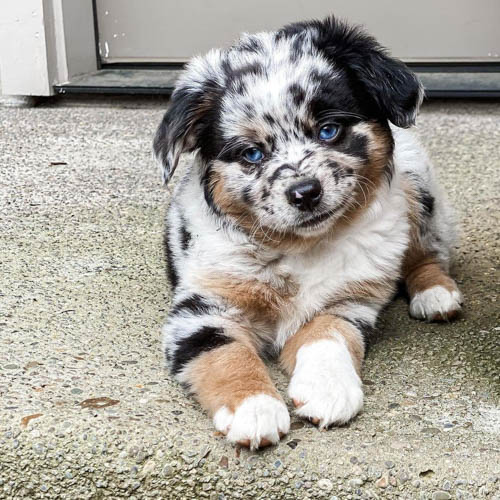
13. Brindle
The same way with merle-coated dogs, brindle-coated dogs come with a particular color pattern, referred to as tiger-striped. These stripes are dark and irregular against the lighter base color, usually gray, brown, and fawn.
This coat pattern is found in dog breeds like Boxer, Bulldog, and Danes. In Boxers, reverse brindle or black brindle often occur, where a heavy black striping concentration covers a large portion of the fawn background. As a result, the coat will look black with fawn stripes.
If your dogs have long, curly or wiry fur, the brindle markings tend to appear less distinct. Interestingly, brindle coat color pattern comes with variations, such as brown brindle, fawn brindle, liver brindle, red brindle, and blue brindle.
14. Sable
Dogs with sable color pattern coats have some of the most unique and interesting hair of all. These dogs have two-tone hair. It is not the color of their coat that has two-tone, but each hair.
The hair base of these dogs, which is close to their skin, has a single color, usually gold, tan, silver, or gray. On the other hand, the hair tips are black, which gives them a look of having another color undercoat. Only a few breeds have this color pattern, including Saluki, Borzoi, and Shetland Sheepdog.
15. Spotted
Dogs with spotted coat patterns have dark pigment patches over a lighter base color. Dalmatians are the only dog breed with this coat pattern. While other dog breeds look like having spots, they are still considered flecks or specks.
According to the American Kennel Club, the background color of Dalmatians is pure white combed with round dense liver brown or black spots.
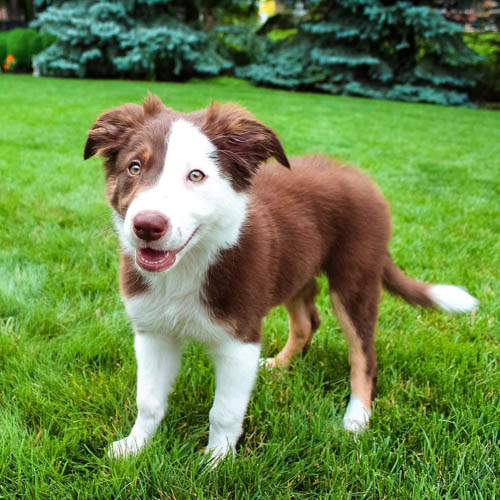
16. Ticked, Flecked, or Speckled
Dog breeds with spots but are not Dalmatians are considered ticked, flecked, or speckled. Generally, these flecks do not have a similar contrast level to the base color as Dalmatians’ spots do. Popular dog breeds with flecks include American Hairless, Great Dane, and English Setter.
Understanding Dogs’ Hair Color
The dogs’ coat color depends on the pigmentation present in their epidermis. A dog only has two pigments that exist: yellow-red and black-brown.
Pigments are produced in melanocytes (cells), and the genetic makeup determines the number and distribution of these cells. These cells pass the pigment onto the dog’s eyes, skin, and hair. They also create color and patterns. Since melanocytes sometimes do not produce pigment during the hair development stage, ticking, agouti, or banding is produced.
When it comes to dogs’ colorful exterior, three specific genes play a critical role: density, color, and pigment. The density gene is responsible for determining the pigmentation’s density.
If dogs have more densely packed pigment, their color becomes darker. The color gene is critical to determining the dog’s color intensity. Finally, the pigment gene is necessary for determining the pigment amount distributed over the dogs’ bodies.
These three genes are all dominant. However, they come with a corresponding recessive mutation that modifies dogs’ appearance.
Regardless of their color from the outside, all dogs are genetically either yellow-red or black-brown. All other colors result from modifiers or other genetic factors that affect the two pigments.
Final Thoughts
One of the reasons why we adore dogs is that they come in varying sizes, shapes, characters, and of course, color. However, no matter their coat color, nothing can change that they are excellent, affectionate, and loyal companions. Dogs will give us happiness, love, and loyalty with proper love and care. Let us not only love them because of their color but also because of their other attributes.
